Cloud Gate: An Iconic Sculpture in Chicago
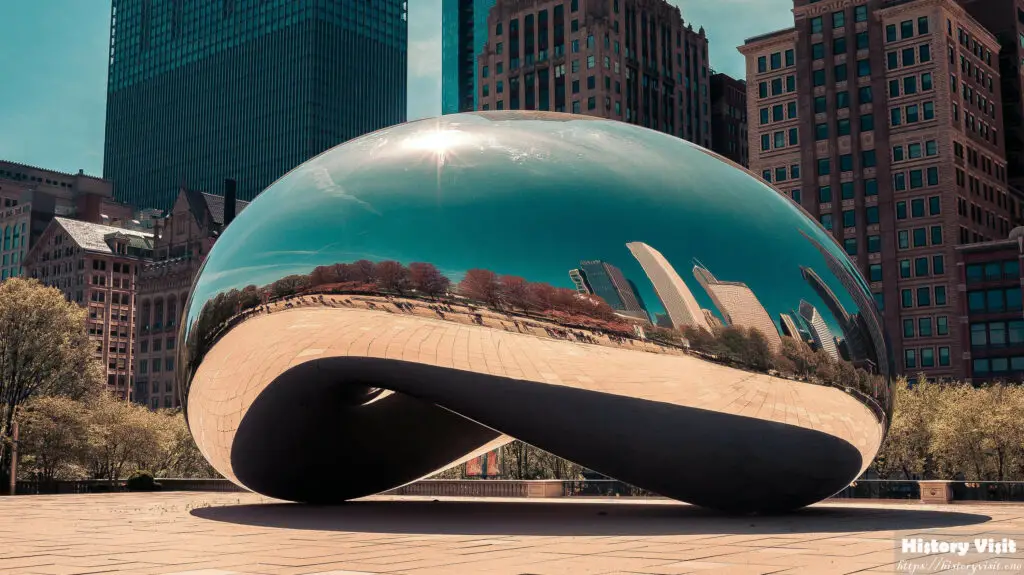
Introduction
In the heart of Millennium Park in downtown Chicago stands a monumental work of art that has captured the imagination of millions since its installation in 2006. Cloud Gate, affectionately known as “The Bean” due to its distinctive shape, is the brainchild of renowned British-Indian artist Anish Kapoor. This stunning sculpture has become an emblem of Chicago’s cultural landscape and a must-see destination for locals and tourists alike.
Anish Kapoor’s Cloud Gate is more than just a sculpture; it’s a testament to the power of art to transform public spaces and foster a sense of wonder and connection. Its gleaming, reflective surface invites viewers to engage with their surroundings in new and unexpected ways, reflecting the city’s skyline, the changing weather, and the faces of those who come to marvel at its beauty. In this article, we’ll delve into the creation, symbolism, technical features, cultural impact, controversies, and legacy of Cloud Gate, offering a comprehensive exploration of this iconic artwork.
The Artist: Anish Kapoor
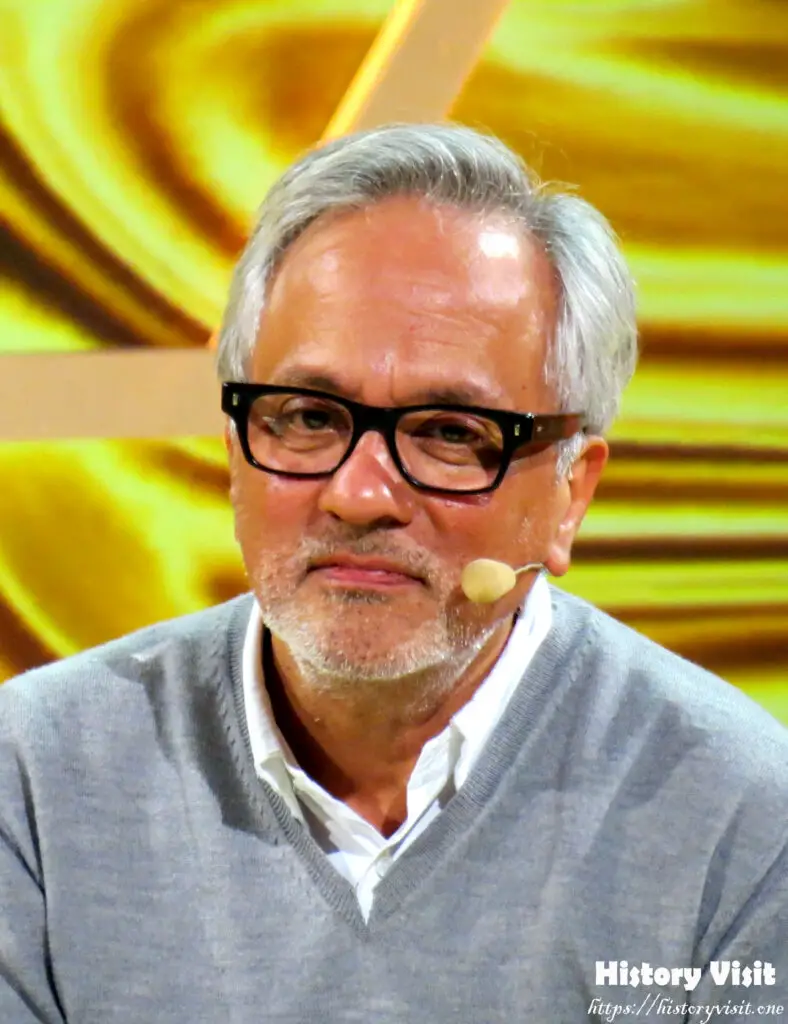
Anish Kapoor’s journey as an artist is as captivating as his creations. Born in Mumbai, India, in 1954, Kapoor moved to London in the early 1970s to study art, where he quickly gained recognition for his innovative use of materials and exploration of space and form. Influenced by both Eastern mysticism and Western modernism, Kapoor’s work often blurs the boundaries between art, architecture, and sculpture, inviting viewers to contemplate the nature of existence and perception.
Kapoor’s artistic vision is deeply rooted in his fascination with the sublime – the awe-inspiring, transcendent experience of encountering something greater than oneself. His sculptures, including Cloud Gate, are often monumental in scale and minimalist in form, yet they possess a profound emotional and spiritual resonance. By playing with light, reflection, and perspective, Kapoor creates immersive environments that challenge our perceptions of space, time, and identity.
The creation of Cloud Gate marked a significant milestone in Kapoor’s career, propelling him to international acclaim and solidifying his reputation as one of the most innovative artists of his generation. As we delve into the genesis of Cloud Gate, we gain a deeper understanding of Kapoor’s artistic process and the philosophical underpinnings of his work.
The Creation of Cloud Gate

The genesis of Cloud Gate can be traced back to the late 1990s when Kapoor was commissioned by the City of Chicago to create a major public artwork for Millennium Park. Inspired by the park’s mission to celebrate the new millennium with innovative art and architecture, Kapoor conceived of a monumental sculpture that would reflect the city’s skyline and capture the imagination of viewers from around the world.
The design and construction process for Cloud Gate was a monumental undertaking that required close collaboration between Kapoor, his team of architects and engineers, and the city of Chicago. Kapoor envisioned a seamless, mirror-like surface that would blend seamlessly with its surroundings, creating the illusion of a “gate to the sky” or a portal to another dimension. To achieve this effect, Kapoor opted for a stainless steel material with a highly polished finish, meticulously crafted to create a flawless reflective surface.
Despite its seemingly simple appearance, Cloud Gate posed numerous technical and logistical challenges during its installation. The sculpture’s massive size and weight required innovative engineering solutions to ensure its stability and safety. Additionally, the highly polished surface required constant maintenance to keep it free of blemishes and imperfections, adding to the complexity of the project. Yet, despite these challenges, Cloud Gate was successfully completed and unveiled to the public in 2006, becoming an instant icon of Chicago’s skyline.
The symbolism and interpretation of Cloud Gate have been the subject of much speculation and debate since its unveiling. The name “Cloud Gate” itself suggests a sense of openness and possibility, inviting viewers to enter into a dialogue with the sculpture and the space around it. Some have interpreted the sculpture as a metaphor for the city of Chicago itself – a melting pot of cultures and ideas reflected in its gleaming surface. Others see it as a meditation on the passage of time and the transitory nature of human existence, as the sculpture’s reflective surface captures and distorts the ever-changing landscape of the city.
One of the most remarkable aspects of Cloud Gate is its ability to engage with viewers on multiple levels, inviting them to interact with the sculpture in their own unique way. Whether it’s taking a selfie against its reflective surface, marveling at its seamless form from a distance, or simply sitting beneath its arch and contemplating the world around them, visitors to Millennium Park are drawn to Cloud Gate’s magnetic presence. In this sense, Kapoor’s sculpture transcends the traditional boundaries of art and architecture, becoming a living, breathing part of the urban landscape.
As an architectural marvel, Cloud Gate has garnered widespread acclaim for its innovative use of materials and its seamless integration into the surrounding environment. The sculpture’s highly polished stainless steel surface reflects the sky, the surrounding buildings, and the faces of visitors, creating a mesmerizing interplay of light and shadow. From a distance, Cloud Gate appears as a shimmering mirage, its elliptical form seemingly suspended in mid-air. Yet, as viewers approach closer, they are drawn into its gravitational pull, compelled to touch its smooth surface and see their own reflections mirrored back at them.
The technical feat of engineering required to bring Cloud Gate to life cannot be overstated. From the initial design phase to the final installation, Kapoor and his team worked tirelessly to ensure that every aspect of the sculpture met their exacting standards of quality and craftsmanship. The result is a work of art that transcends its physical dimensions, inviting viewers to experience a moment of transcendence and connection with the world around them.
Maintaining Cloud Gate’s pristine appearance requires ongoing care and attention to detail. Despite its durable stainless steel construction, the sculpture is susceptible to scratches, fingerprints, and other blemishes caused by the thousands of visitors who come to admire it each day. To preserve its reflective surface, the sculpture undergoes regular cleaning and maintenance, ensuring that it continues to shine bright for generations to come.
In addition to its technical achievements, Cloud Gate has had a profound cultural impact on the city of Chicago and the broader art world. As a symbol of innovation and creativity, the sculpture has become an emblem of Chicago’s identity, attracting millions of visitors each year and serving as a focal point for community gatherings and events. Its iconic silhouette has been immortalized in countless photographs, postcards, and works of art, cementing its status as one of the most recognizable landmarks in the city.
Cloud Gate’s legacy extends far beyond the confines of Millennium Park, inspiring artists, architects, and urban planners around the world to rethink the role of public art in shaping our shared spaces. Its success has sparked a renaissance in public art initiatives, with cities from New York to Dubai commissioning their own monumental sculptures to enhance their urban landscapes. As we look to the future, Cloud Gate serves as a shining example of the transformative power of art to bring people together, spark dialogue, and create moments of beauty and wonder in our everyday lives.
In conclusion, Cloud Gate stands as a testament to the enduring power of art to inspire, provoke, and unite us as a community. From its humble beginnings as a concept drawing to its iconic status as a global landmark, Anish Kapoor’s masterpiece continues to captivate audiences with its beauty, innovation, and profound symbolism. As we reflect on the legacy of Cloud Gate, we are reminded of the importance of investing in public art as a means
Symbolism and Interpretation

The symbolism and interpretation of Cloud Gate have been subjects of fascination and contemplation since its unveiling in 2006. At its core, the name “Cloud Gate” suggests a sense of openness and possibility, inviting viewers to enter into a dialogue with the sculpture and the space around it. Anish Kapoor himself has described the sculpture as a “gate to the sky” or a portal to another dimension, evoking a sense of transcendence and wonder.
One prevalent interpretation of Cloud Gate is as a metaphor for the city of Chicago itself – a melting pot of cultures and ideas reflected in its gleaming surface. Just as the sculpture captures and distorts the ever-changing landscape of the city, so too does it reflect the diversity and dynamism of its inhabitants. From the soaring skyscrapers to the bustling streets below, Cloud Gate encapsulates the spirit of Chicago in all its complexity and vibrancy.
Others see Cloud Gate as a meditation on the passage of time and the transitory nature of human existence. As visitors gaze upon their reflections mirrored back at them, they are reminded of their own mortality and the fleeting nature of life. Yet, there is also a sense of continuity and connection in seeing oneself reflected in the faces of others, suggesting that we are all part of a larger whole, bound together by our shared humanity.
The elliptical shape of Cloud Gate further enhances its symbolism, evoking images of infinity and eternity. As viewers walk around the sculpture, they are enveloped by its curved surface, creating a sense of enclosure and containment. Yet, at the same time, the open archway invites them to pass through and explore what lies beyond. In this way, Cloud Gate becomes a metaphor for the journey of self-discovery, inviting viewers to reflect on their own lives and aspirations.
Ultimately, the beauty of Cloud Gate lies not only in its stunning visual impact but also in its ability to engage viewers on a deeper, more contemplative level. Whether it’s pondering the meaning of its name, marveling at its seamless form, or simply enjoying the play of light and shadow on its reflective surface, visitors to Millennium Park are drawn to Cloud Gate’s magnetic presence. In doing so, they become active participants in the ongoing dialogue between art, architecture, and the human experience.
Technical Features
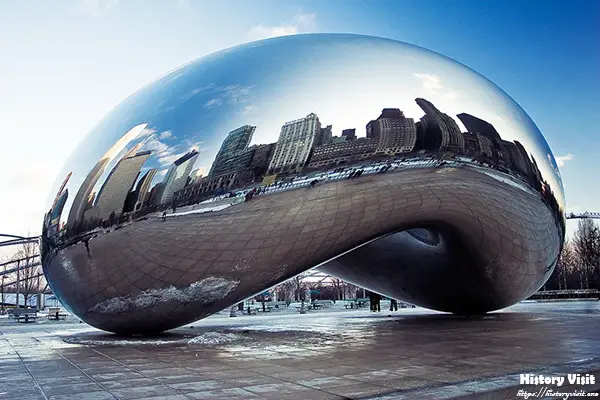
The technical features of Cloud Gate are as impressive as its aesthetic appeal, contributing to its status as a modern engineering marvel. From its materials to its construction methods, every aspect of the sculpture has been meticulously designed and executed to achieve Anish Kapoor’s vision of a seamless, mirror-like surface that reflects the surrounding environment in breathtaking detail.
At the heart of Cloud Gate’s design is its use of stainless steel – a material known for its durability, corrosion resistance, and ability to achieve a highly polished finish. Kapoor selected stainless steel for its reflective properties, which allow the sculpture to mirror the sky, the surrounding buildings, and the faces of visitors with remarkable clarity. The choice of material also lends Cloud Gate a timeless quality, ensuring that it remains visually striking for years to come.
To create the flawless reflective surface of Cloud Gate, Kapoor and his team employed advanced polishing techniques that require precision and skill. Each panel of stainless steel was carefully welded and ground to remove imperfections before being polished to a mirror-like finish. The result is a seamless, distortion-free surface that appears to flow effortlessly from one end of the sculpture to the other, creating the illusion of a continuous loop.
The engineering behind Cloud Gate’s construction is equally impressive, given its massive size and weight. The sculpture measures 66 feet long, 33 feet wide, and 42 feet tall, making it one of the largest of its kind in the world. To support its weight and ensure its stability, Kapoor worked closely with a team of architects and engineers to develop a robust structural framework that could withstand the forces of nature and the rigors of public use.
One of the most remarkable aspects of Cloud Gate’s engineering is its ability to withstand the elements while maintaining its pristine appearance. Despite being located in a city known for its harsh winters and sweltering summers, the sculpture has remained virtually unchanged since its installation, thanks to its durable stainless steel construction and regular maintenance. To keep Cloud Gate looking its best, the sculpture undergoes periodic cleaning and polishing to remove dirt, fingerprints, and other blemishes caused by the thousands of visitors who come to admire it each day.
In addition to its technical achievements, Cloud Gate has also pushed the boundaries of public art and architecture, inspiring other artists and designers to rethink the role of sculpture in urban environments. Its innovative use of materials, its seamless integration into the surrounding landscape, and its ability to engage viewers on multiple levels have set a new standard for what public art can achieve. As a result, Cloud Gate stands not only as a testament to Anish Kapoor’s artistic vision but also as a shining example of the transformative power of art to inspire, provoke, and unite us as a community.
Cultural Impact
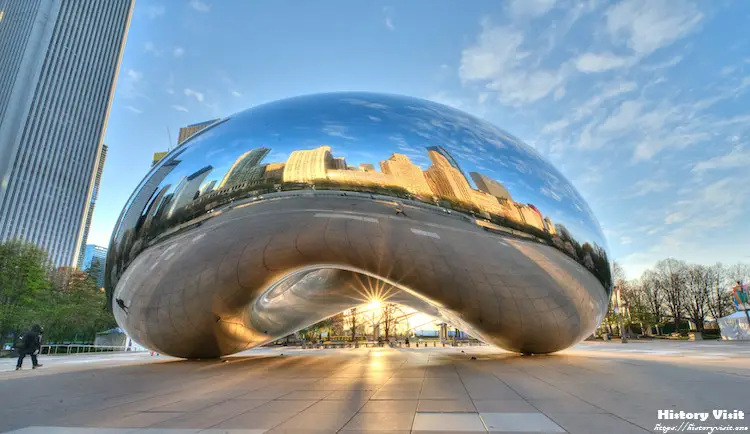
Cloud Gate’s cultural impact extends far beyond its status as a captivating work of art; it has become an integral part of Chicago’s identity and a symbol of the city’s rich cultural heritage. Since its unveiling in 2006, the sculpture has captured the imagination of millions of visitors from around the world, becoming one of Chicago’s most iconic landmarks and a must-see destination for tourists and locals alike.
As a symbol of innovation and creativity, Cloud Gate has helped to elevate Chicago’s reputation as a hub for arts and culture on the global stage. Its distinctive silhouette has been immortalized in countless photographs, postcards, and works of art, serving as a visual shorthand for the city’s vibrant cultural scene. In this sense, Cloud Gate has become a powerful ambassador for Chicago, attracting visitors from far and wide and generating millions of dollars in tourism revenue each year.
Beyond its economic impact, Cloud Gate has also had a profound effect on the way people experience public space in the city. Situated in Millennium Park, one of Chicago’s premier public parks, the sculpture serves as a focal point for community gatherings, cultural events, and public performances. Its open-air design and central location make it the perfect spot for people to come together, connect with one another, and celebrate the beauty of art and nature.
Cloud Gate’s influence on the city’s cultural landscape can also be seen in its role as a catalyst for public art initiatives. In the years since its installation, Chicago has continued to invest in the creation of new public artworks, transforming parks, plazas, and streetscapes into vibrant outdoor galleries. These initiatives not only enhance the aesthetic appeal of the city but also foster a sense of civic pride and belonging among its residents.
Moreover, Cloud Gate’s success has inspired other cities around the world to invest in their own public art projects as a means of revitalizing urban spaces and fostering community engagement. From New York’s High Line to Dubai’s Burj Khalifa, cities are increasingly turning to art and architecture as tools for social and economic development, following in the footsteps of Chicago and its iconic Bean.
In conclusion, Cloud Gate’s cultural impact is undeniable, transcending its status as a mere sculpture to become a symbol of Chicago’s spirit and resilience. As visitors gaze upon its shimmering surface and marvel at its seamless form, they are reminded of the power of art to inspire, unite, and transform our shared spaces. In this sense, Cloud Gate serves as a testament to the enduring legacy of Anish Kapoor’s vision and the enduring appeal of public art in shaping our cities and communities.
Controversies and Criticisms
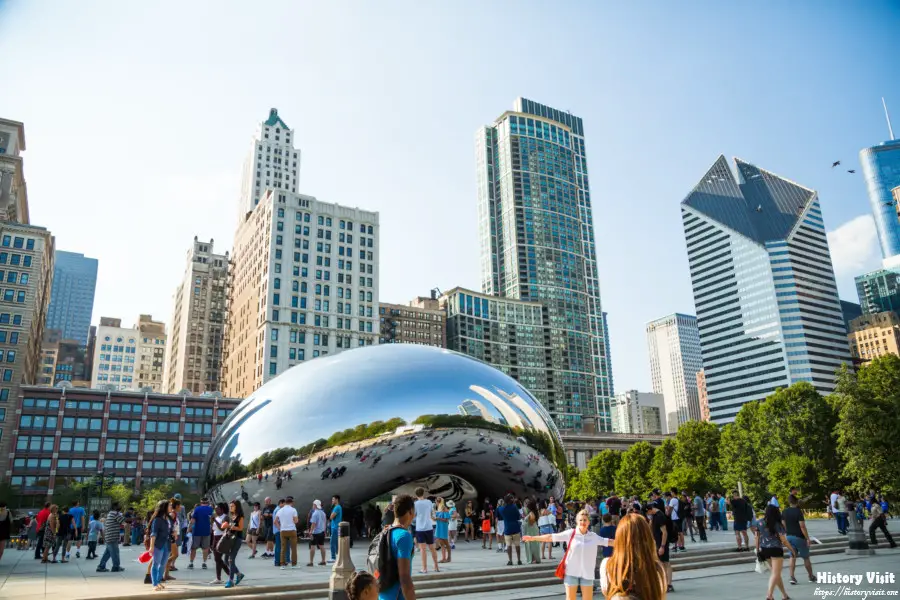
Despite its widespread acclaim and popularity, Cloud Gate has not been without its share of controversies and criticisms. From its inception to the present day, the sculpture has faced scrutiny and debate from various quarters, raising questions about its cost, accessibility, and artistic merit.
One of the primary controversies surrounding Cloud Gate has been its cost and funding. Critics have pointed to the sculpture’s hefty price tag – reportedly over $23 million – as evidence of government waste and misplaced priorities. Some have questioned whether such a large sum of money could have been better spent on social services or infrastructure projects, particularly in a city with pressing economic and social needs.
Accessibility has also been a point of contention for Cloud Gate, with some critics arguing that its location in Millennium Park caters primarily to tourists and affluent residents, rather than serving the needs of the broader community. The park’s entrance fees and limited public transportation options have been cited as barriers to access for low-income and marginalized groups, raising concerns about equity and inclusion in the city’s public spaces.
In addition to these practical concerns, Cloud Gate has also faced artistic criticisms from some quarters. Some have dismissed the sculpture as little more than a giant tourist attraction, lacking the depth and complexity of more traditional works of art. Others have questioned its originality, noting similarities between Cloud Gate and earlier sculptures by artists such as Anish Kapoor’s Cloud Gate has also faced artistic criticisms from some quarters. Some have dismissed the sculpture as little more than a giant tourist attraction, lacking the depth and complexity of more traditional works of art. Others have questioned its originality, noting similarities between Cloud Gate and earlier sculptures by artists such as Claes Oldenburg and Constantin Brâncuși. Still, others have raised concerns about its environmental impact, citing the resources required to maintain its stainless steel surface and the energy needed to power the lights and heating elements embedded within the sculpture.
Despite these criticisms, Cloud Gate remains a beloved symbol of Chicago and a source of inspiration for millions around the world. Its gleaming surface and iconic silhouette continue to captivate visitors of all ages, inviting them to contemplate the beauty of art and the power of imagination. As the sculpture enters its second decade, it serves as a reminder of the enduring legacy of Anish Kapoor’s vision and the enduring appeal of public art in shaping our cities and communities.
Conclusion

In conclusion, Cloud Gate stands as a testament to the enduring power of art to inspire, provoke, and unite us as a community. From its humble beginnings as a concept drawing to its iconic status as a global landmark, Anish Kapoor’s masterpiece continues to captivate audiences with its beauty, innovation, and profound symbolism. As we reflect on the legacy of Cloud Gate, we are reminded of the importance of investing in public art as a means of enriching our shared spaces and fostering a sense of connection and belonging.
Over the years, Cloud Gate has become more than just a sculpture; it has become an integral part of Chicago’s identity and a symbol of the city’s rich cultural heritage. Its gleaming surface and iconic silhouette have captured the imagination of millions of visitors from around the world, attracting tourists and locals alike to Millennium Park. As a symbol of innovation and creativity, Cloud Gate has helped to elevate Chicago’s reputation as a hub for arts and culture on the global stage, generating millions of dollars in tourism revenue each year.
Despite facing controversies and criticisms, Cloud Gate remains a beloved symbol of Chicago and a source of inspiration for millions. Its seamless form and reflective surface continue to invite viewers to engage with their surroundings in new and unexpected ways, fostering moments of beauty, wonder, and connection. As we look to the future, Cloud Gate serves as a shining example of the transformative power of art to bring people together, spark dialogue, and create moments of joy and inspiration in our everyday lives.


